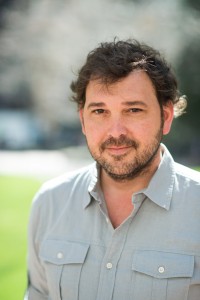
Jon Green works with brands across numerous areas to design and develop innovative mobile solutions. He manages a group of talented UI/UX designers and helps to shape the design directions that they take as a team. Jon has worked on several apps that have topped the charts of the itunes app store and has been recognized for his work including a google material design award announced at google i/o 2015. Check out some of the Raizlabs work here.
RSVP for a Coffee Talk with RaizlabsWhat’s your design philosophy?
We look at products holistically versus thinking about one screen at a time. It is important to think about motion and all pieces of the app that inform each other because you are never designing just one view.
What motivates you to do great work?
Creating fun and useful experiences for users. I like to create useful tools for people which is why I like the engineering side as much as the design side. We are building one piece of software that utilizes both. If using a product we built becomes second nature we know our solution is a successful way to solve a problem.
What is the Raizlabs design super power?
Never settling, intuitiveness, and our culture. We have been very inventive with our approach to creating software. We are basically just a big group of problem solvers.
What’s the first project your company worked on?
Our CEO, Greg Raiz, defined the Runkeeper business model and designed their original app. He told them to build a running app with maps and GPS.
How do you go from concept to finished product?
First, sketch really loosely on a white board. Do a lot of research on your users, product market fit, and competing companies in the same space. As ideas start to solidify your sketches will et tighter and tighter and then you can move to the computer. It is simple really. All the while don’t just think about the screen you are working on but how it interacts with all the screen around it.
Where does the team find inspiration? How do you keep the team inspired?
Visually it tends to be in things; grill texture on a car, a paint job I saw on a wall or maybe a housing magazine. Idea inspiration spawns from a need that desires to be filled. Asking the question “Why has no one solved that yet?”.
What keeps you up at night?
My 23 month old daughter and making sure the team has projects that they enjoy working on. How to allocate resources and make sure we are building quality products. Knowing where the next big ideas are coming from, if our process working, and if we can we tweak the process to make better products and happier employees.
What are three things you believe in right now?
I know that “mobile” does not mean phones, iPads or other devices. It is more of a state of being. It is the connected data and world around us. In five years it won’t be a phone but it will still be with you and your ability to tap into this larger network of information.
I think the world can always be a better place.
In terms of design, I believe in the Z index which allows you to go beyond just up, down, right and left when interacting with apps. I also find the notion of no ui and instead using shapes, sounds, and audio to navigate very interesting.
Wine, liquor or beer?
It depends on the mood and the location. The coast of North Carolina in the summer time on a beach then it has to be a beer. But after a long day at work it will be Jack.
What are tips for other designers out there who may just be getting started?
Think holistically and don’t get caught in the details too early. I truly believe in the fail fast and fail often. Don’t be afraid to try something. Don’t forget that when we started designing we start it in analogue. Go to paper or whiteboard to get all of your ideas out and down. It will help you focus where you think your energy should go. It is like a refinement funnel.
I used to make people do a weighting exercise. Which one is the most important element and how is that shown in the hierarchy? How big is it, how bold should it be and visually where it should be placed? Are you going to be consistent with this approach all the way through? When you sketch it all out you know what you are building. And then, you can sweat the details after you get this out of the way. You have more mental space to see the special design opportunities.
If your studio had a motto, what would it be?
Design between the screens.

